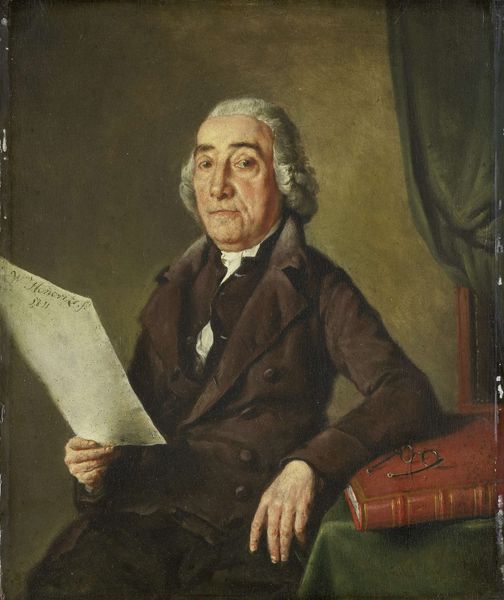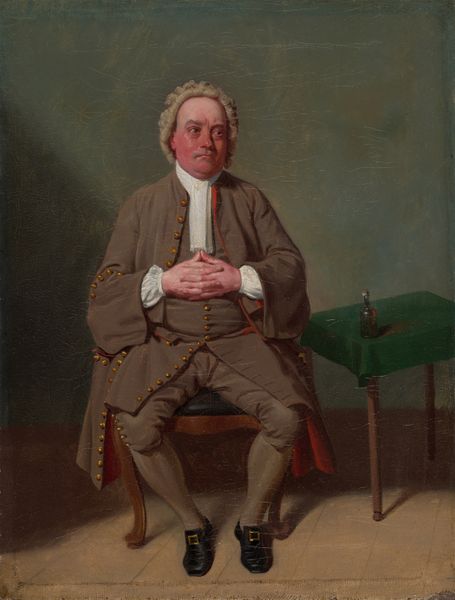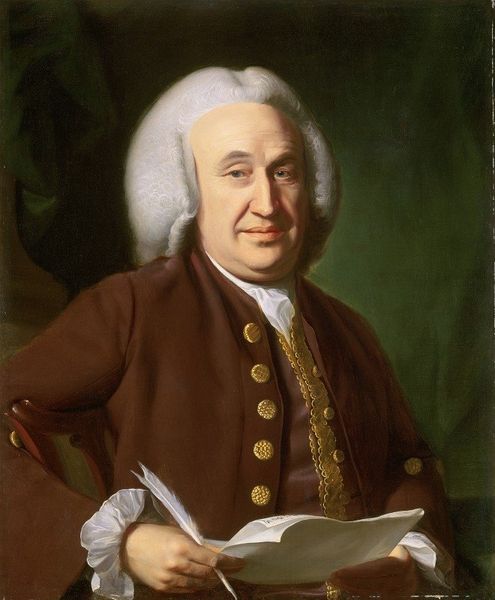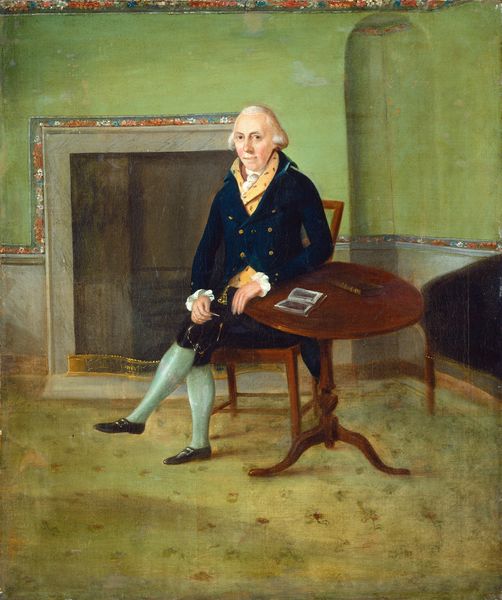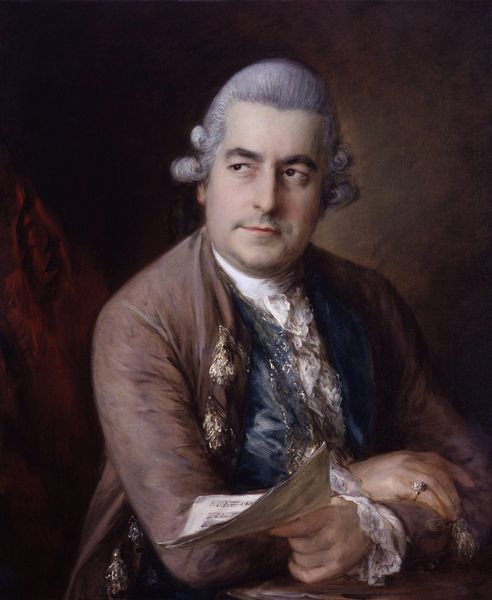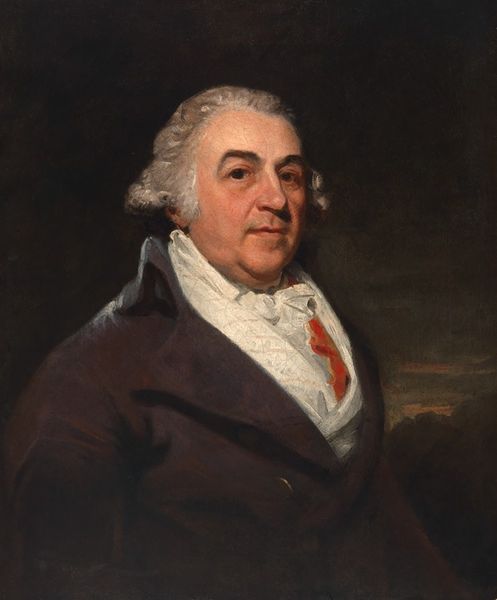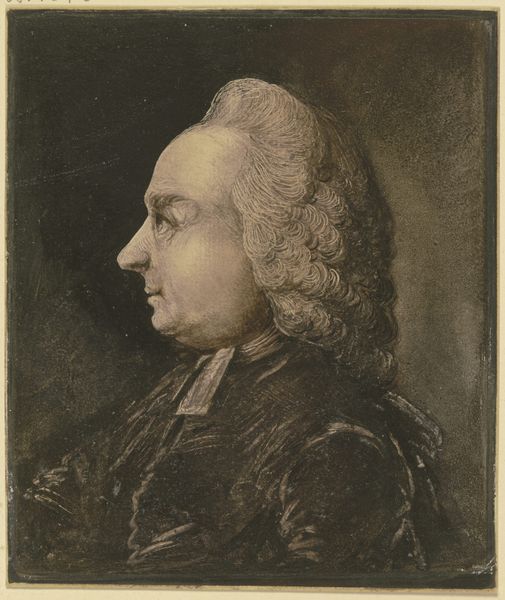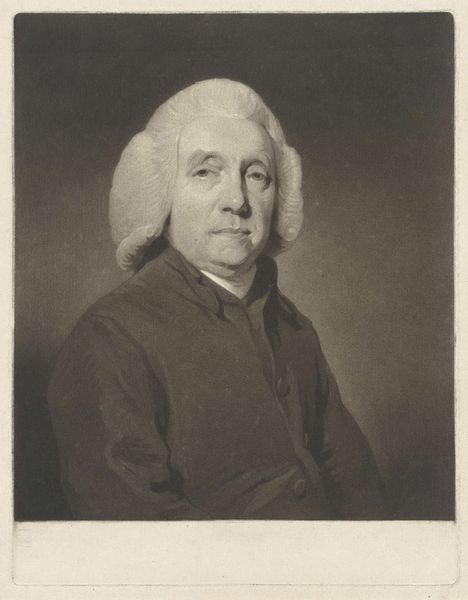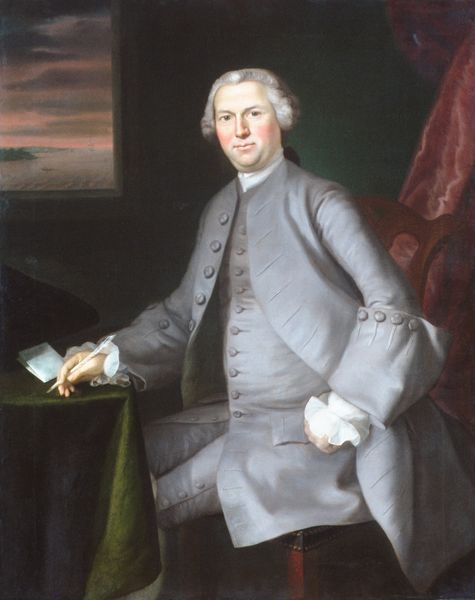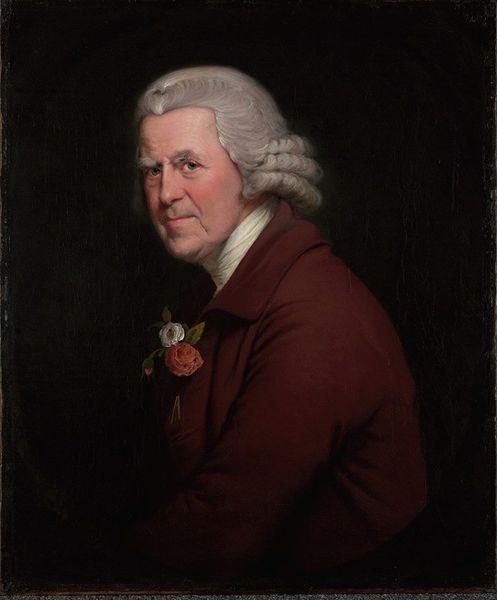
Copyright: Public Domain: Artvee
John Singleton Copley painted this portrait of Eleazer Tyng with oil. Note the subject's hands, clasped gently upon his knee. The gesture is more than mere physical repose. It evokes a sense of quiet authority, an inner peace, and control over one's self, reminiscent of the ancient Roman ideal of "virtus," where composure and self-mastery were paramount virtues, symbols of power. The arrangement of the hands, intertwined, speaks volumes. We see similar gestures echoed through time, from depictions of Roman emperors to Renaissance scholars, each iteration carrying echoes of that original gravitas. This motif of intertwined hands resonates with our collective memory, stirring something deep within us. Like palimpsests of the soul, layering our modern understanding with the weight of centuries. As this symbol resurfaces it mirrors humanity's eternal quest for composure, wisdom, and dominance.
Comments
No comments
Be the first to comment and join the conversation on the ultimate creative platform.
